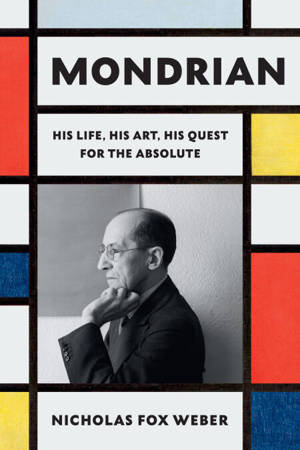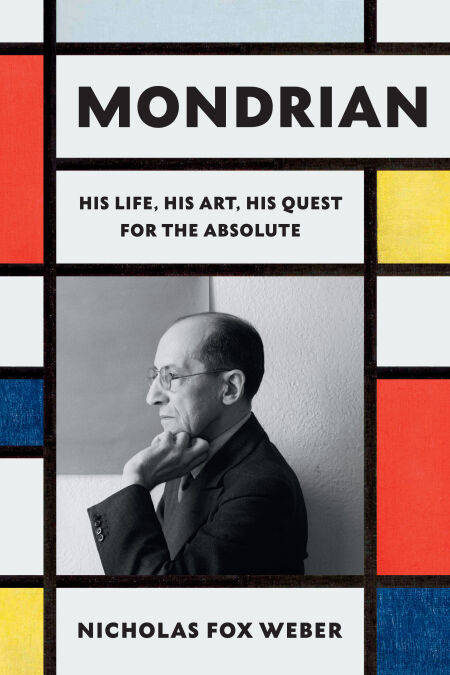
- Afhalen na 1 uur in een winkel met voorraad
- Gratis thuislevering in België vanaf € 30
- Ruim aanbod met 7 miljoen producten
- Afhalen na 1 uur in een winkel met voorraad
- Gratis thuislevering in België vanaf € 30
- Ruim aanbod met 7 miljoen producten
Zoeken
€ 12,67
+ 12 punten
Uitvoering
Omschrijving
THE NEW YORK TIMES BOOK REVIEW EDITORS' CHOICE • The extraordinary and surprising life of Piet Mondrian, whose unprecedented geometric art revolutionized modern painting, architecture, graphic art, fashion design, and more—from acclaimed cultural historian Nicholas Fox Weber
"As fastidiously passionate as his subject's paintings. How wonderful it is to read of Mondrian's gaiety and zest. . . as well as his rigour and unrelenting commitment to his own, absolutely his own, view of art and the world." —John Banville, national bestselling author of The Lock-Up
In the early 1920s, surrounded by the roaring streets of avant-garde Paris, Piet Mondrian began creating what would become some of the most recognizable abstract paintings of the 20th century. With rectangles of primary colors against a dazzling white background, this was geometric abstraction in its purest form. These revolutionary compositions exhilarated, intoxicated, confused, and enraged the international public—and changed the course of modern art forever.
Now, for the first time, Mondrian emerges alongside his thrilling art. Here is the life of an elusive modern master: from his youth in a religious household in the Netherlands where he first began painting Dutch farmhouses and sand dunes, to his move to Paris where he embraced the work of Pablo Picasso, Georges Seurat, and Cézanne, to the 1920s and onward where, surviving the turmoil of two world wars and embracing a rapidly shifting culture, Mondrian challenged the concept of art and invented a new world of undiluted colors and rhythmic straight lines. His work would go on to affect painting, architecture, fashion, and design in decades to come.
Here is also an intimate portrait of a complex artist, his solitude and avoidance of intimacy, his eccentricities and his philosophy, his passion for ballroom dancing, and his unwavering belief in art as a vehicle to reveal universal truths.
"As fastidiously passionate as his subject's paintings. How wonderful it is to read of Mondrian's gaiety and zest. . . as well as his rigour and unrelenting commitment to his own, absolutely his own, view of art and the world." —John Banville, national bestselling author of The Lock-Up
In the early 1920s, surrounded by the roaring streets of avant-garde Paris, Piet Mondrian began creating what would become some of the most recognizable abstract paintings of the 20th century. With rectangles of primary colors against a dazzling white background, this was geometric abstraction in its purest form. These revolutionary compositions exhilarated, intoxicated, confused, and enraged the international public—and changed the course of modern art forever.
Now, for the first time, Mondrian emerges alongside his thrilling art. Here is the life of an elusive modern master: from his youth in a religious household in the Netherlands where he first began painting Dutch farmhouses and sand dunes, to his move to Paris where he embraced the work of Pablo Picasso, Georges Seurat, and Cézanne, to the 1920s and onward where, surviving the turmoil of two world wars and embracing a rapidly shifting culture, Mondrian challenged the concept of art and invented a new world of undiluted colors and rhythmic straight lines. His work would go on to affect painting, architecture, fashion, and design in decades to come.
Here is also an intimate portrait of a complex artist, his solitude and avoidance of intimacy, his eccentricities and his philosophy, his passion for ballroom dancing, and his unwavering belief in art as a vehicle to reveal universal truths.
Specificaties
Betrokkenen
- Auteur(s):
- Uitgeverij:
Inhoud
- Aantal bladzijden:
- 656
- Taal:
- Engels
Eigenschappen
- Productcode (EAN):
- 9780307961600
- Verschijningsdatum:
- 21/10/2024
- Uitvoering:
- E-book
- Beveiligd met:
- Adobe DRM
- Formaat:
- ePub

Alleen bij Standaard Boekhandel
+ 12 punten op je klantenkaart van Standaard Boekhandel
Beoordelingen
We publiceren alleen reviews die voldoen aan de voorwaarden voor reviews. Bekijk onze voorwaarden voor reviews.








